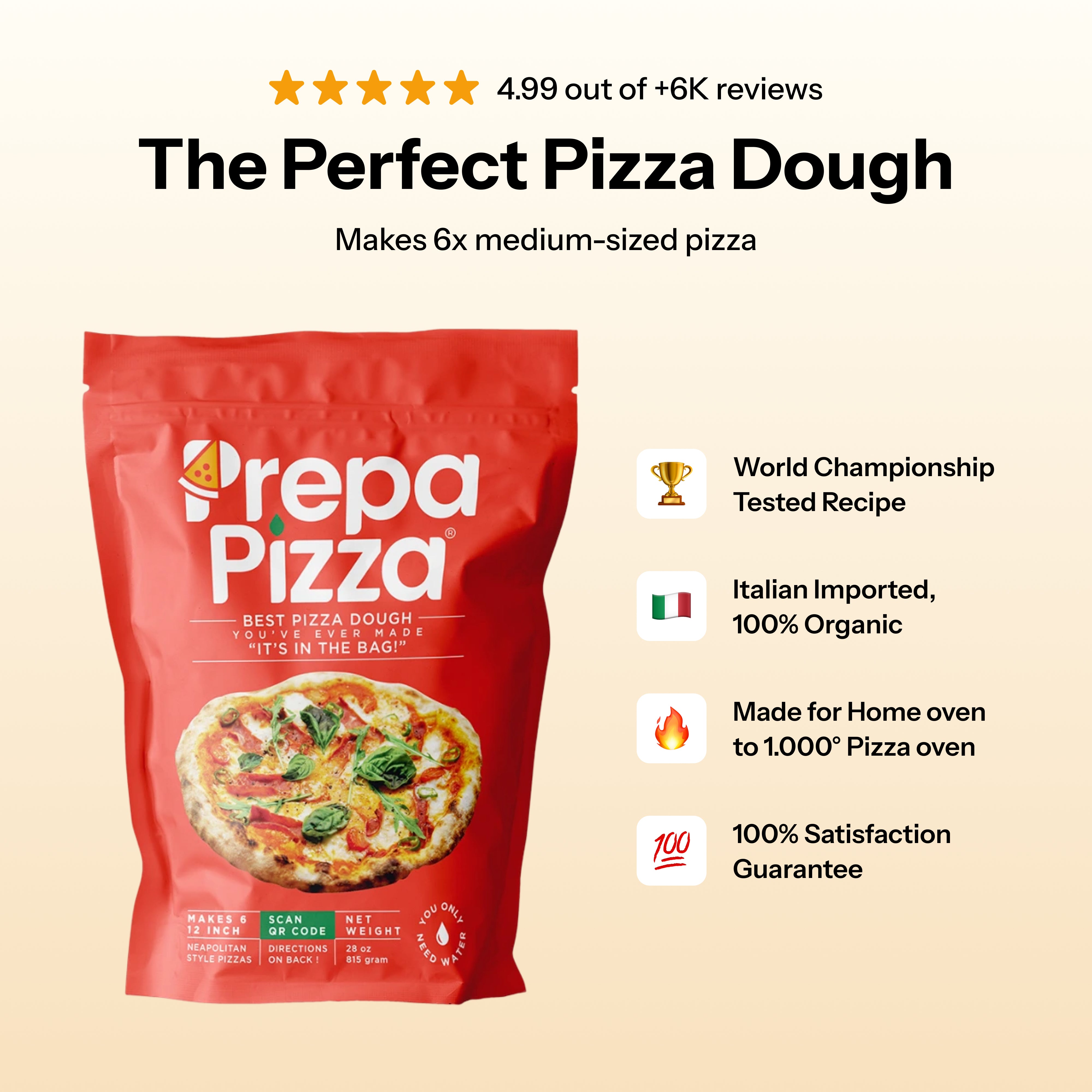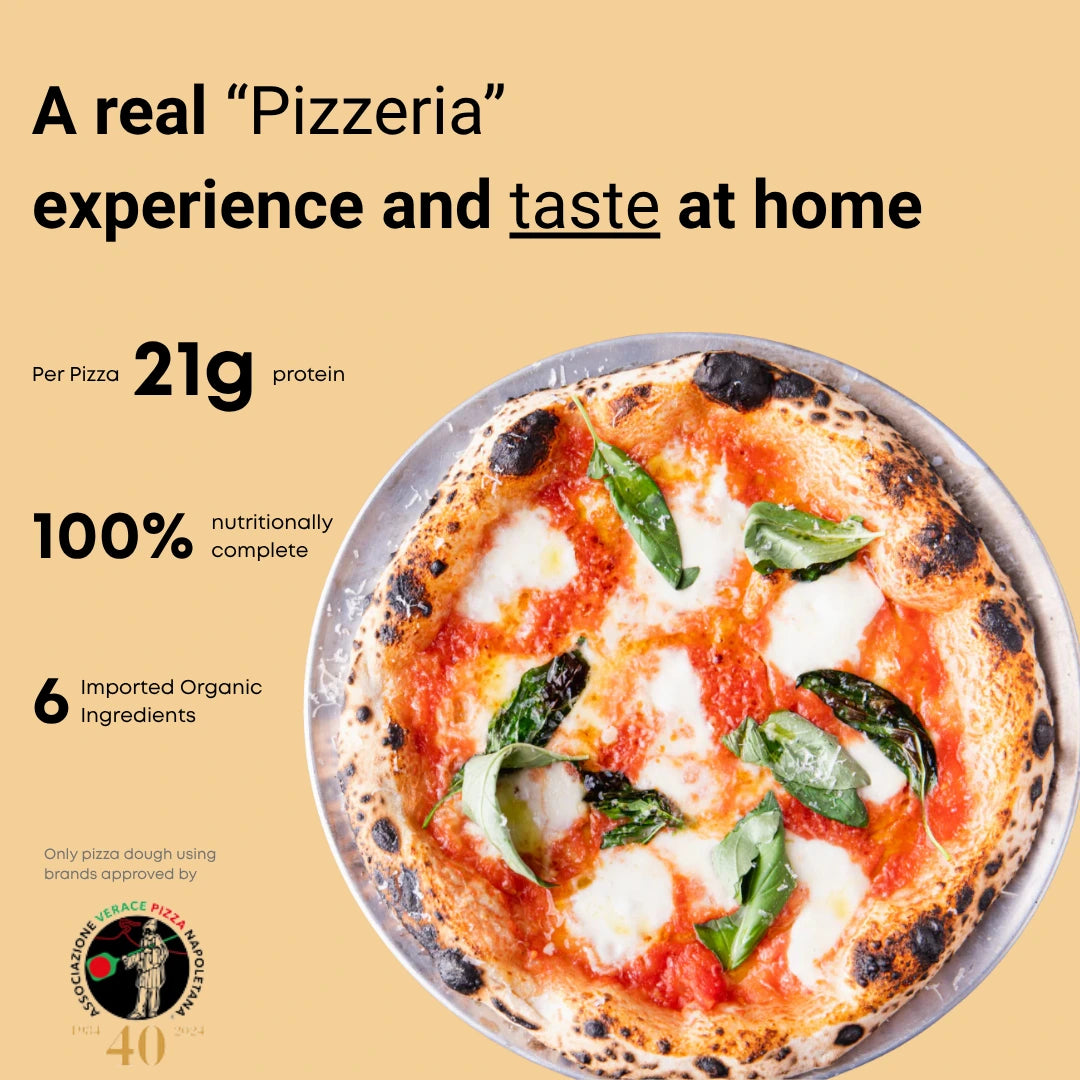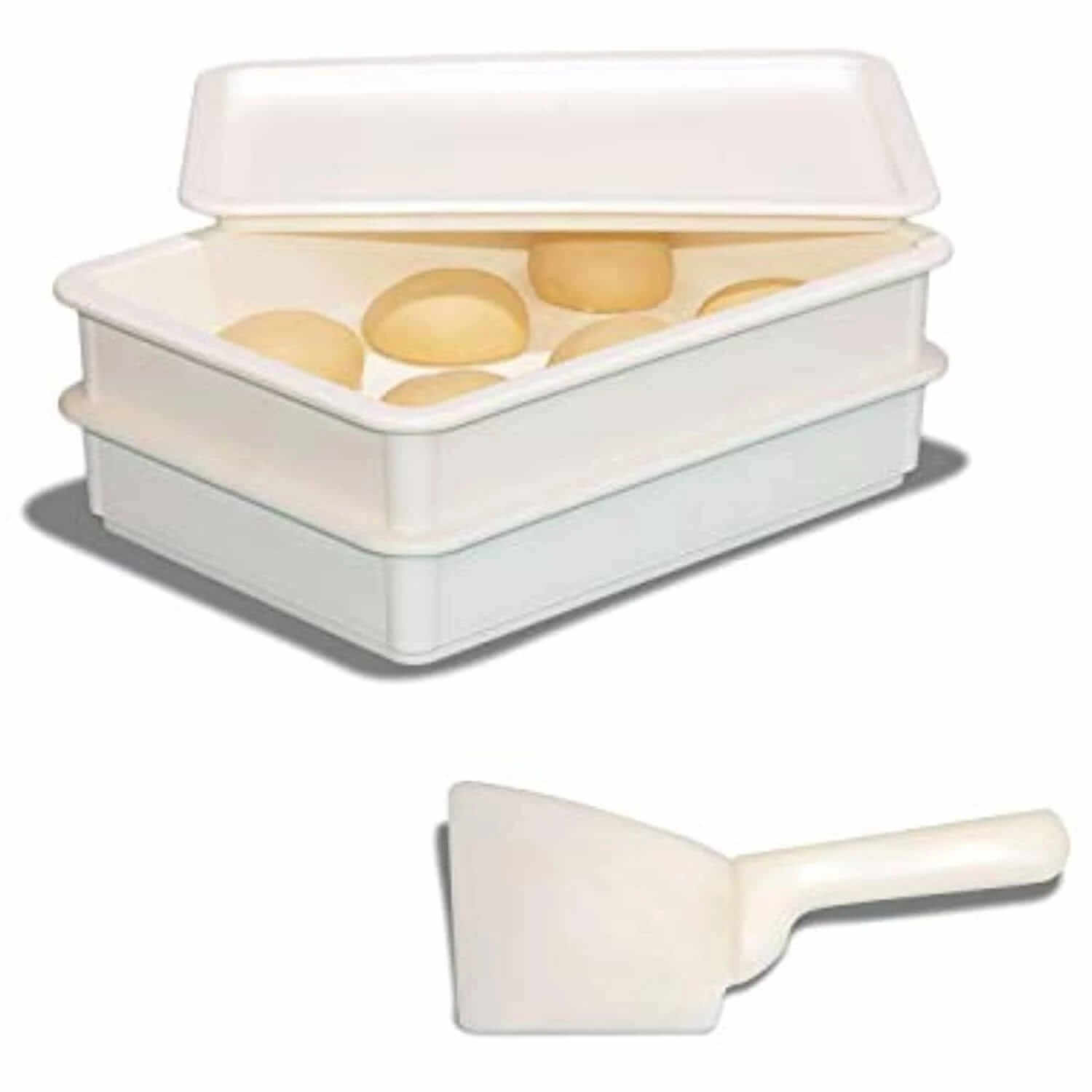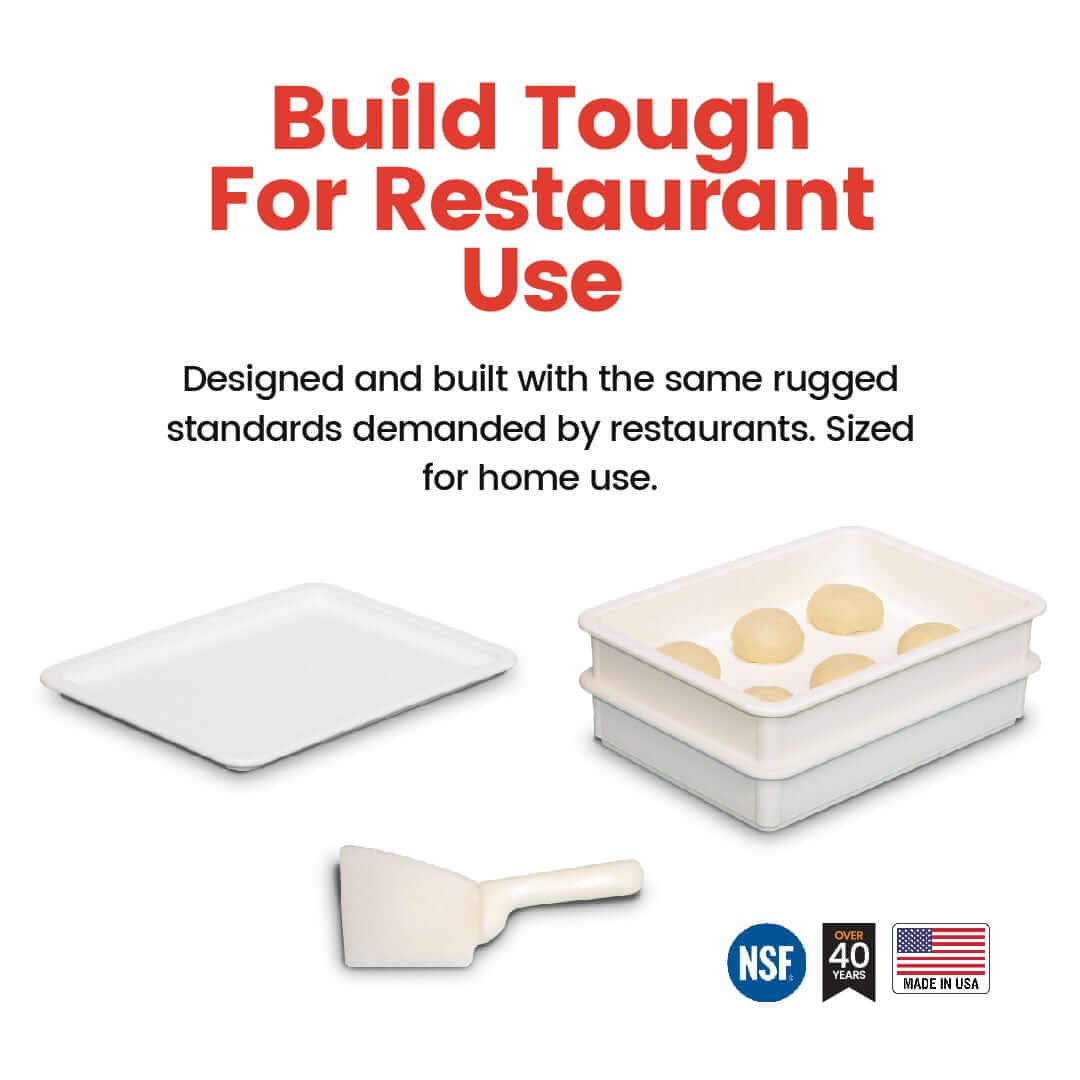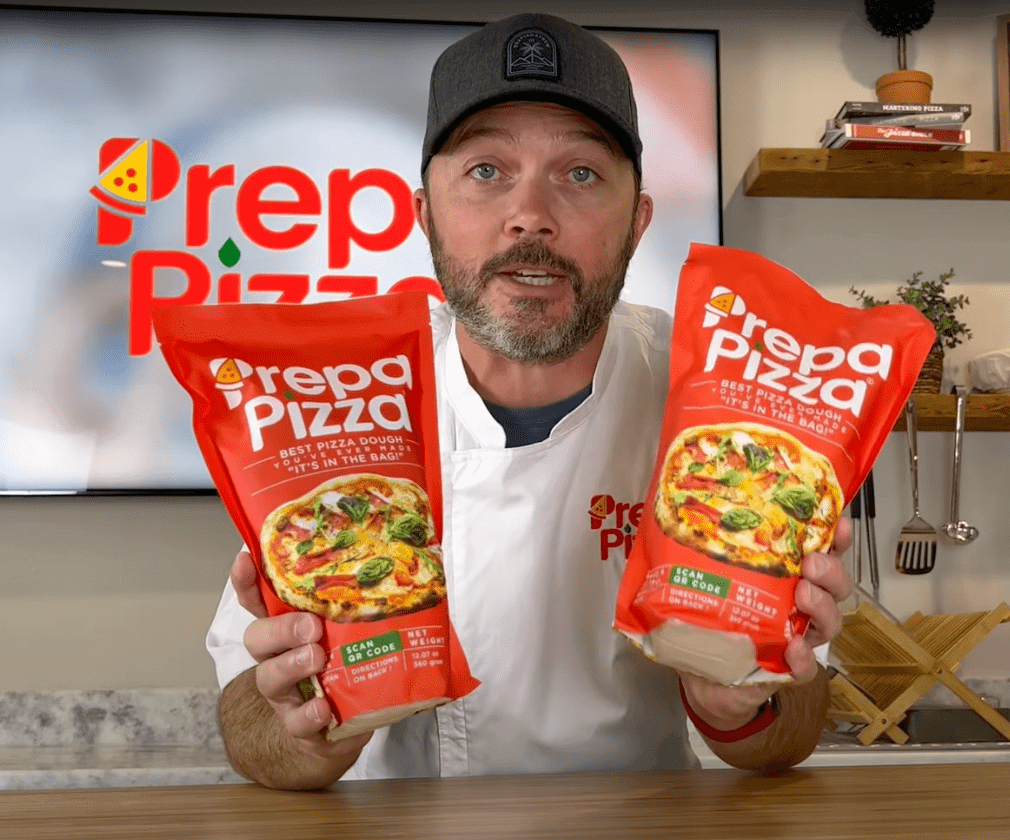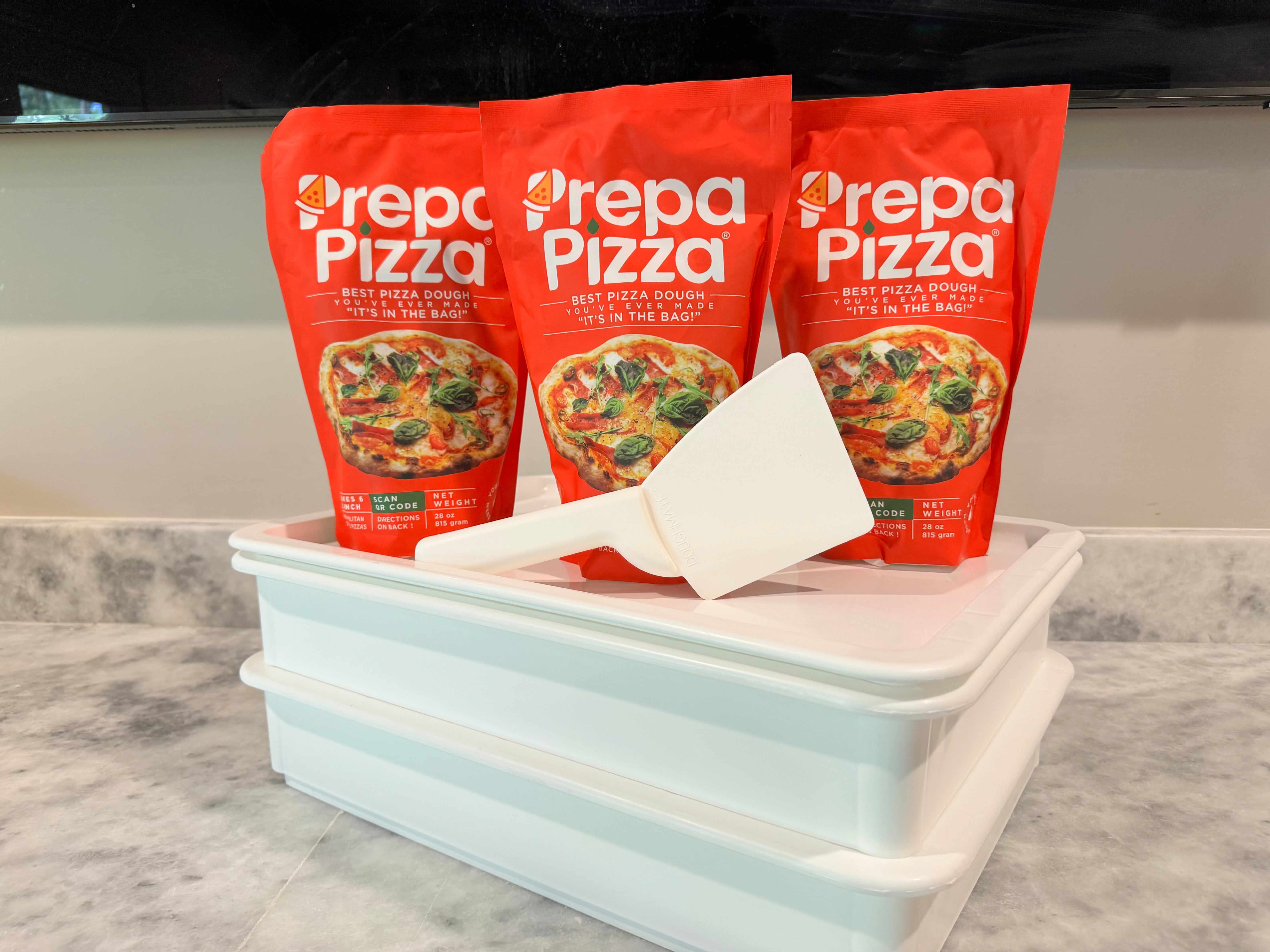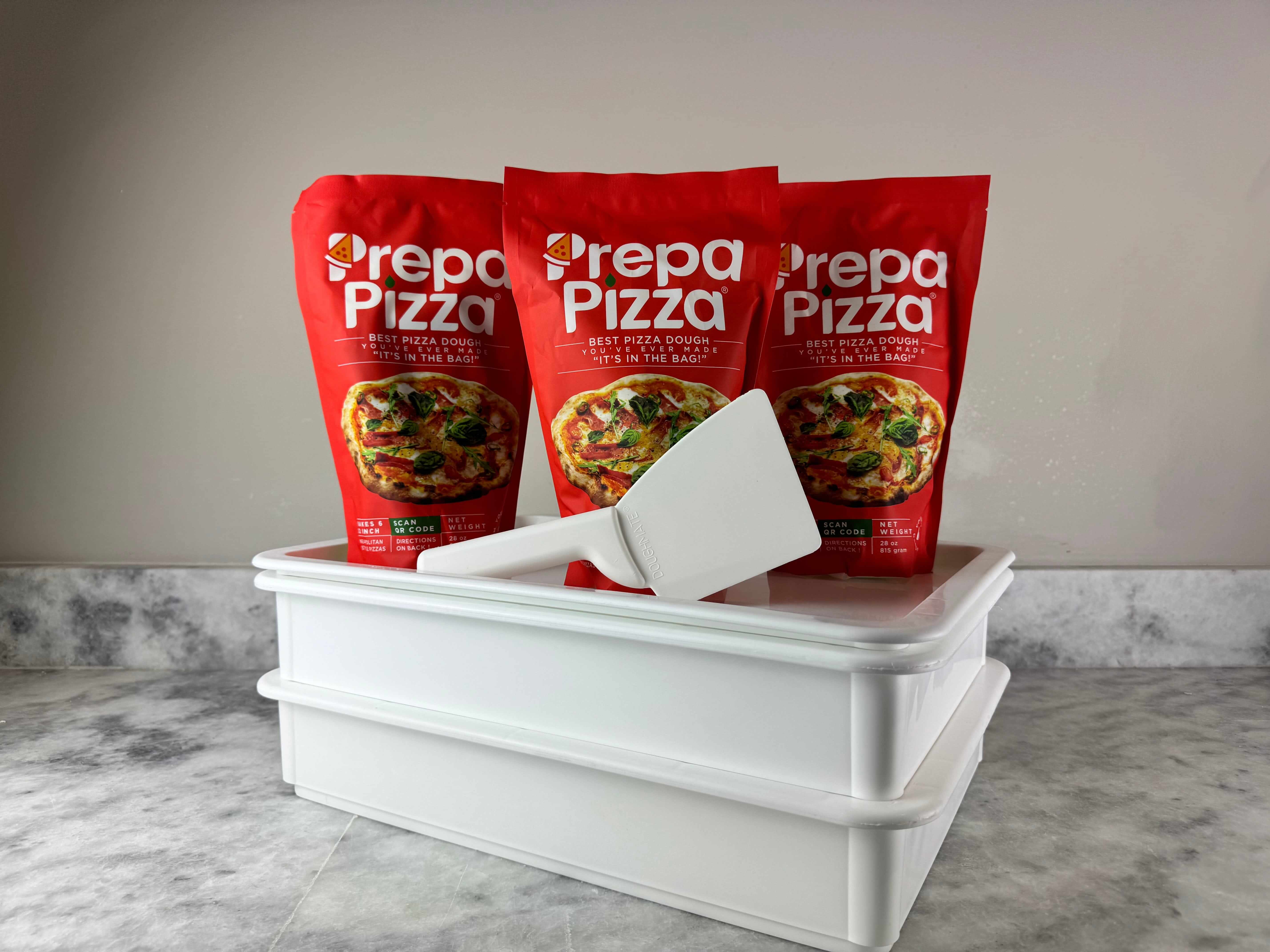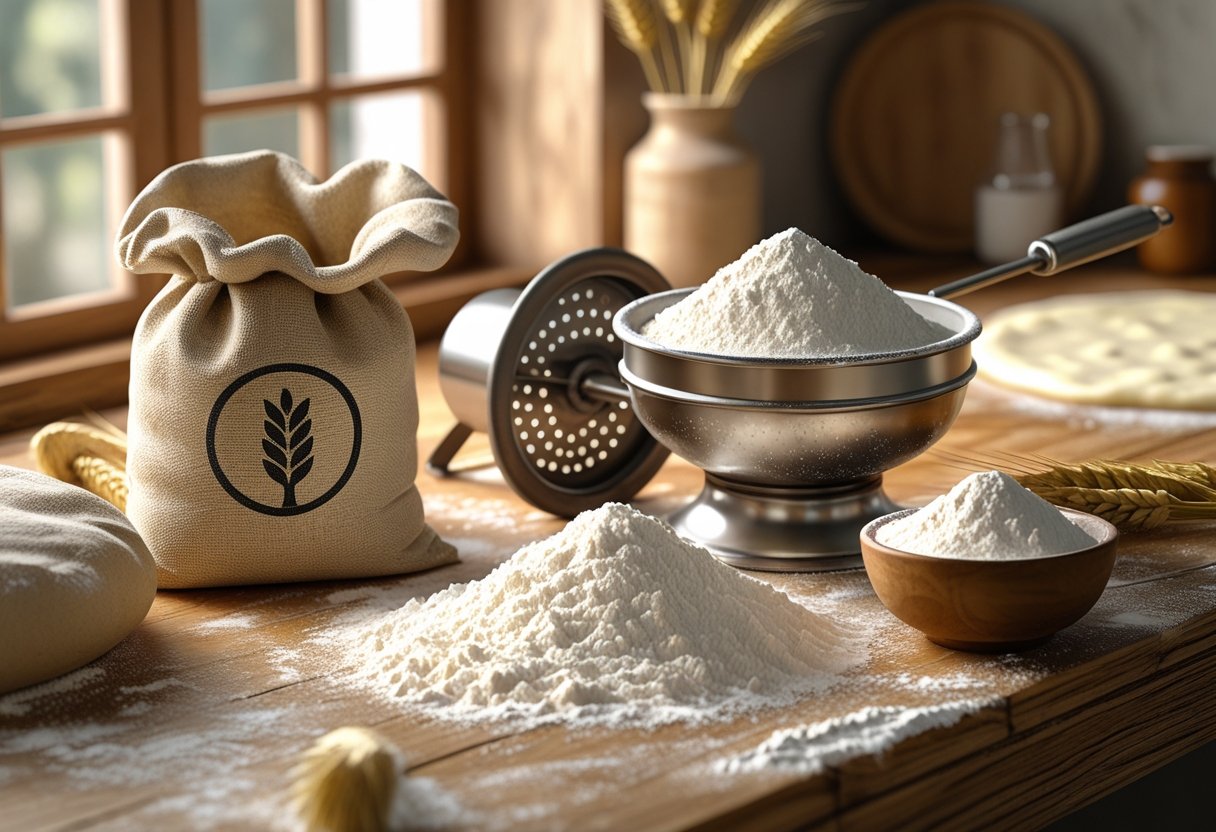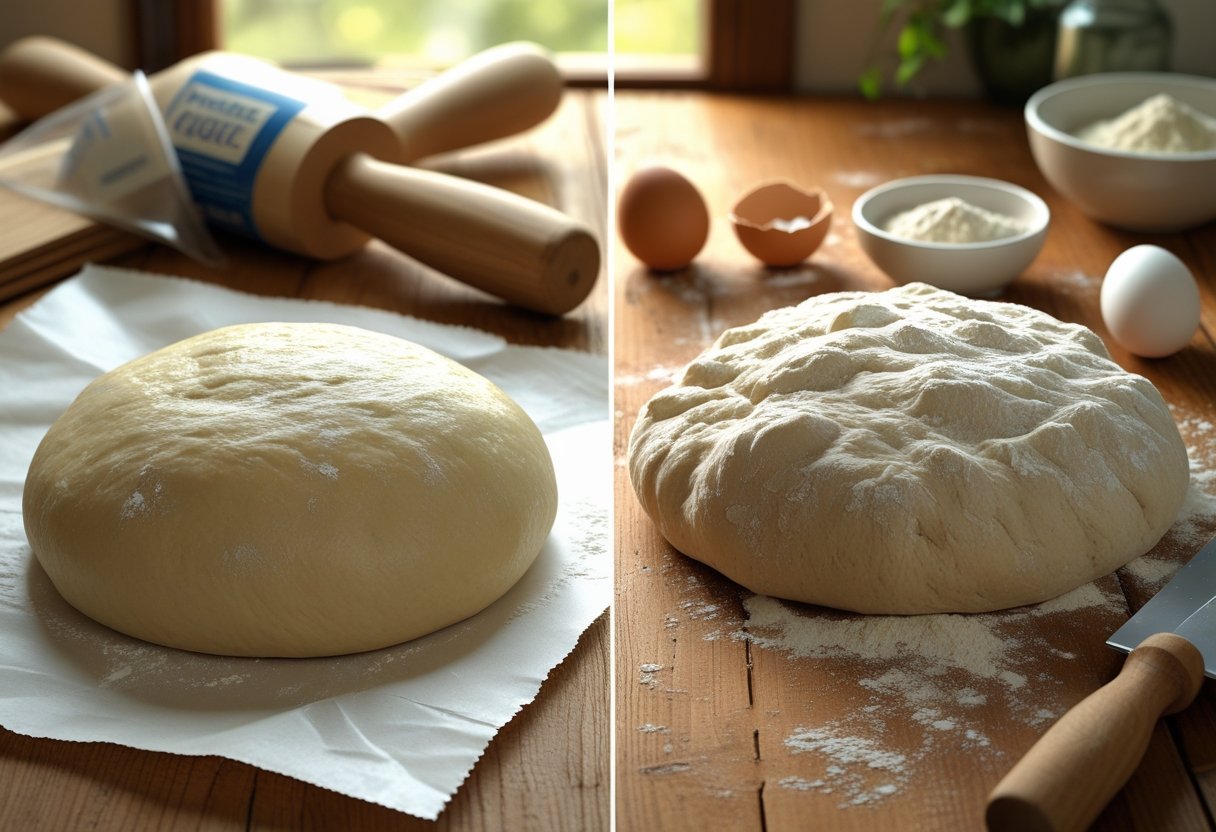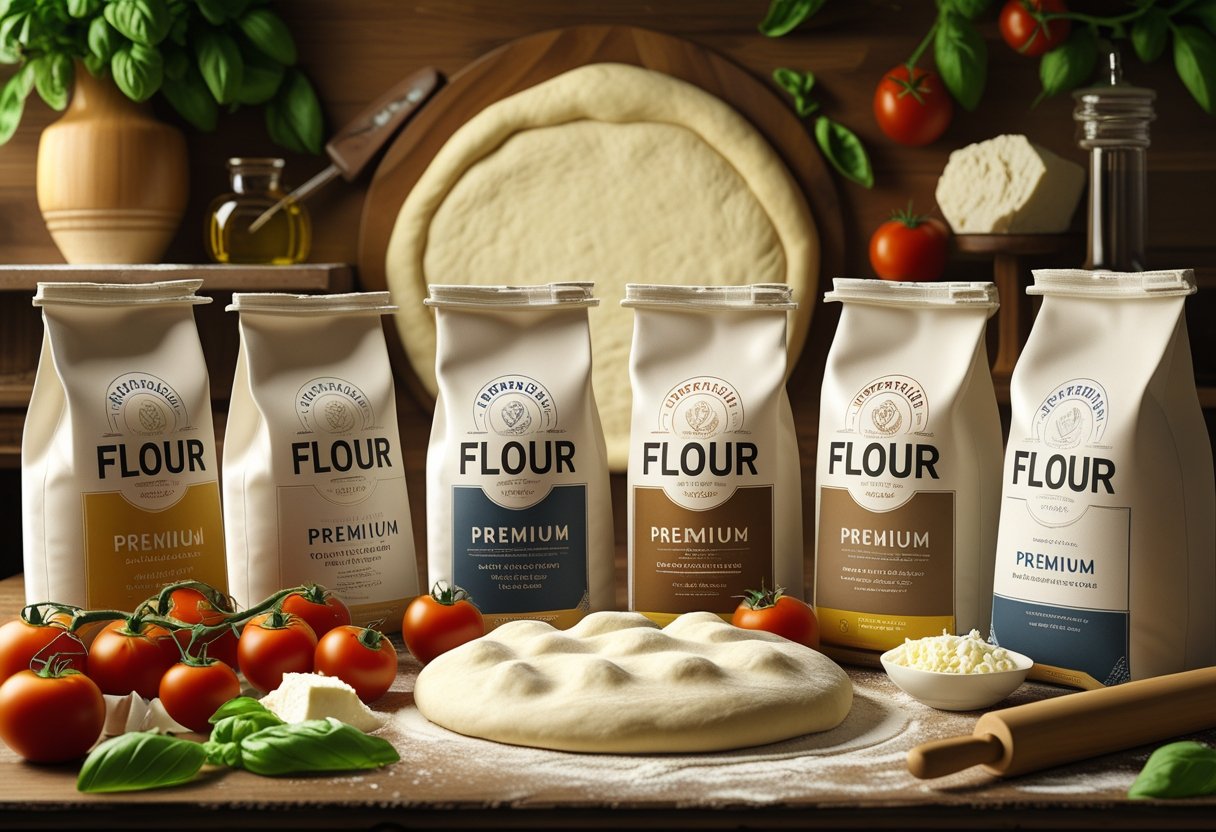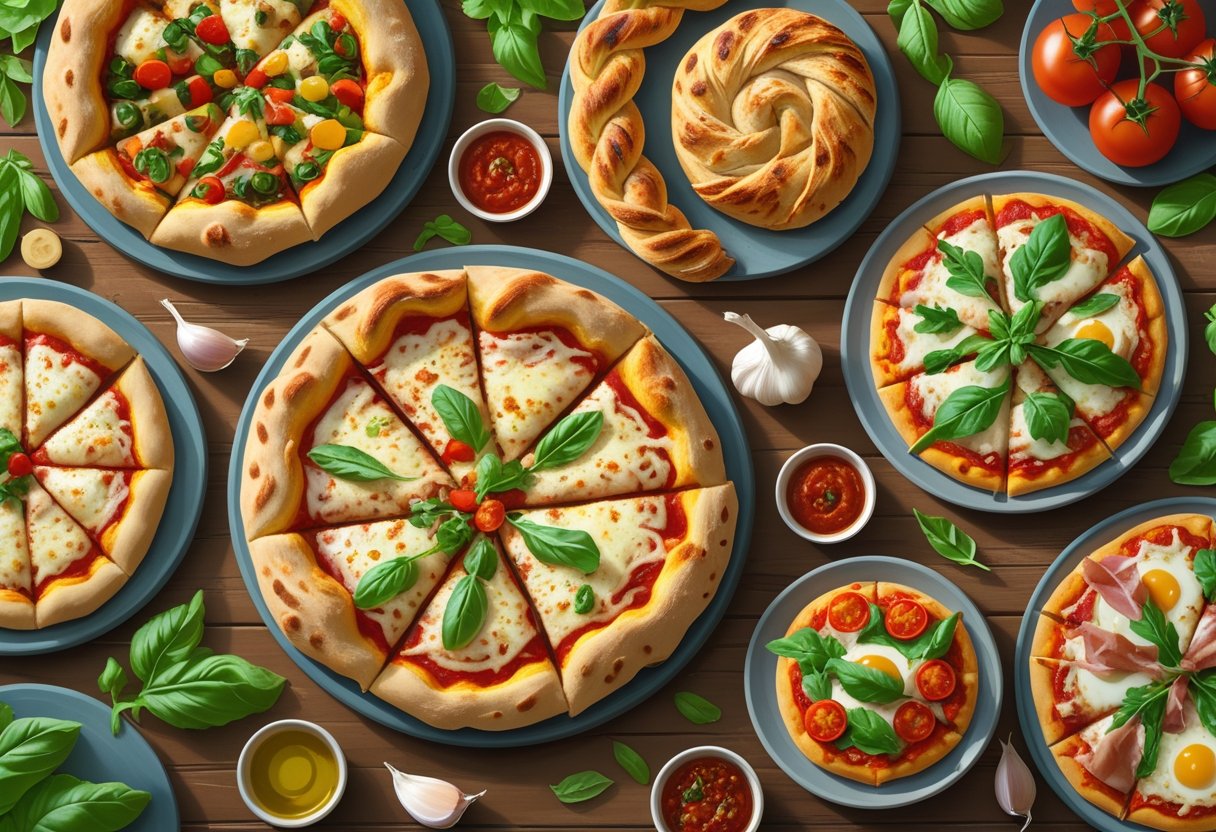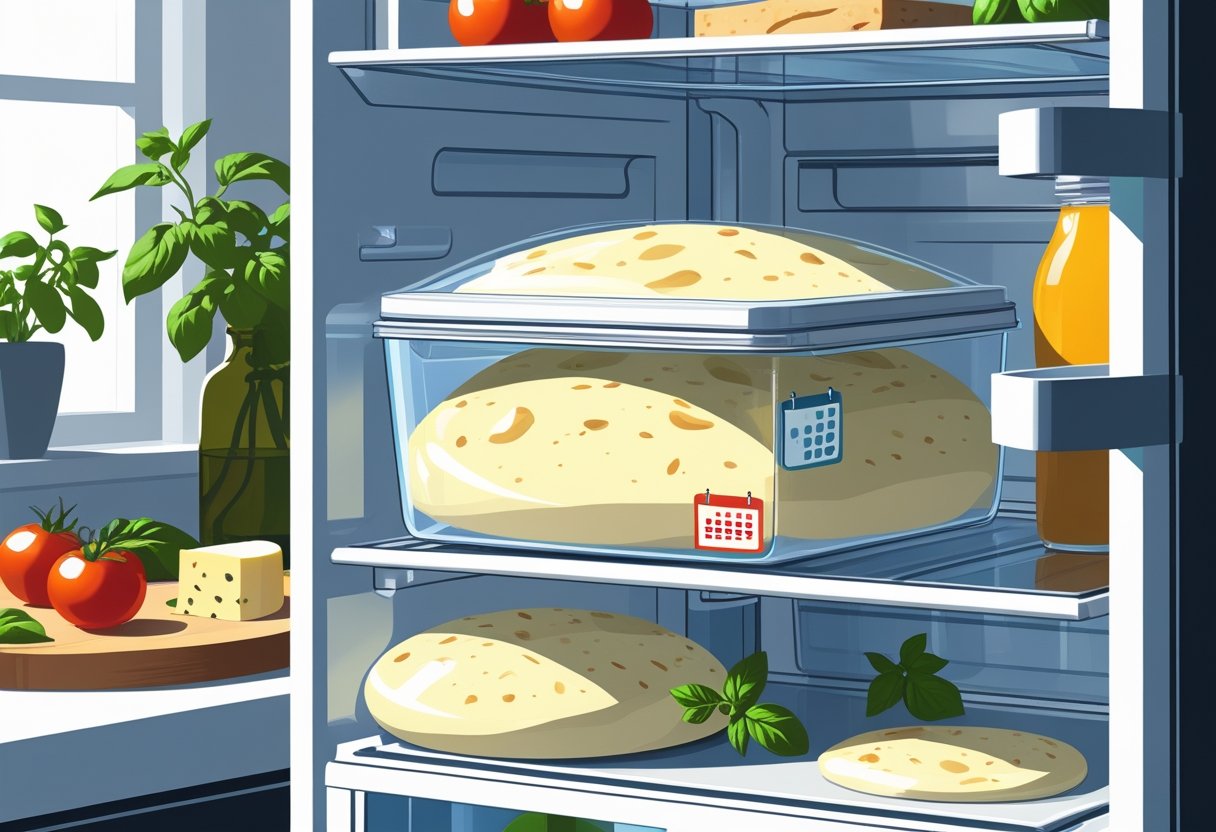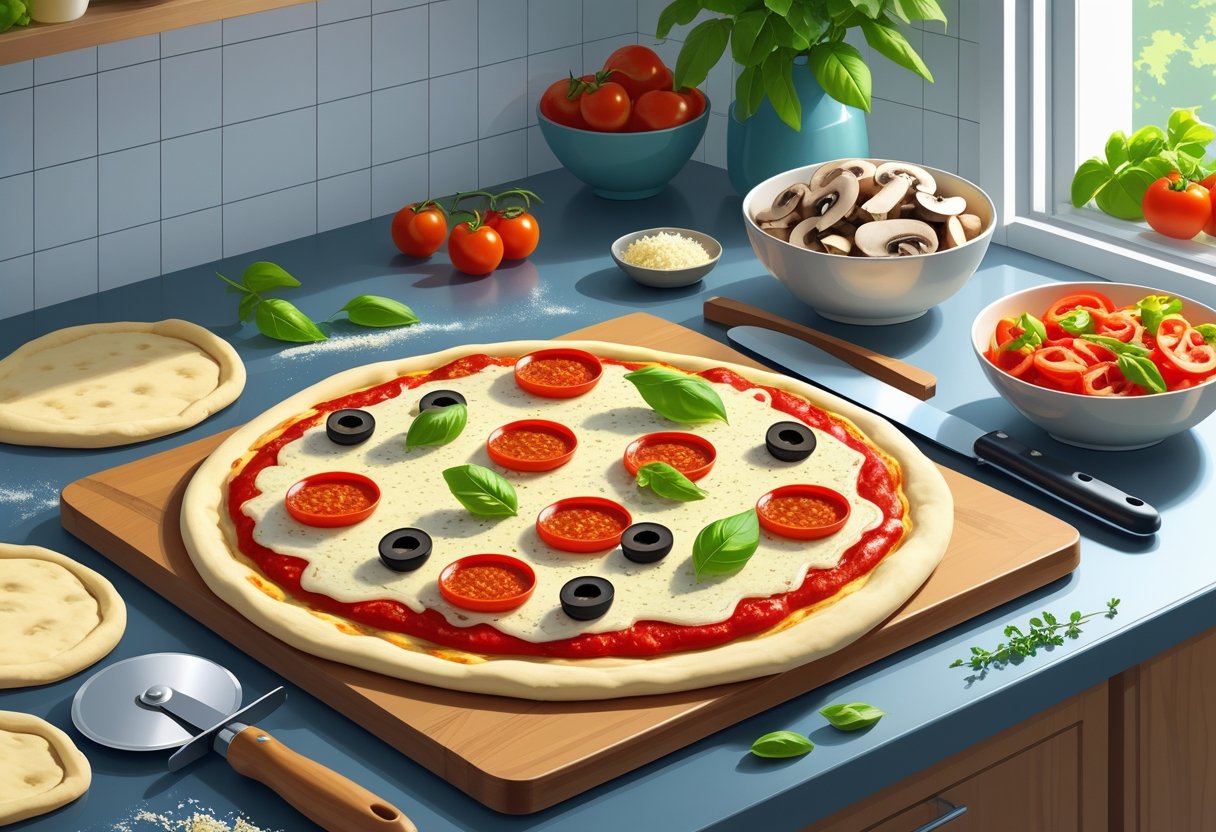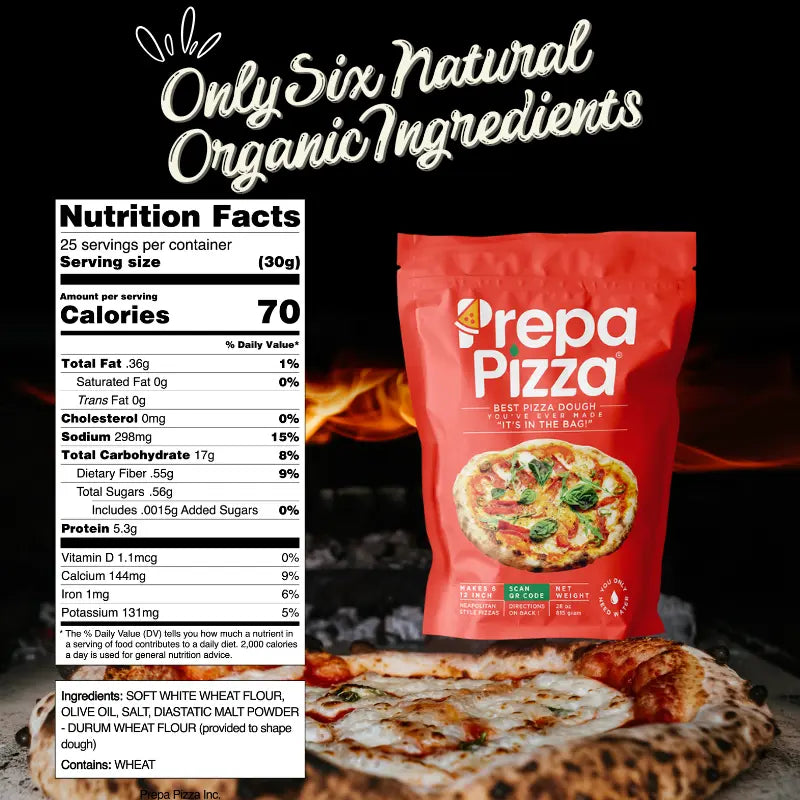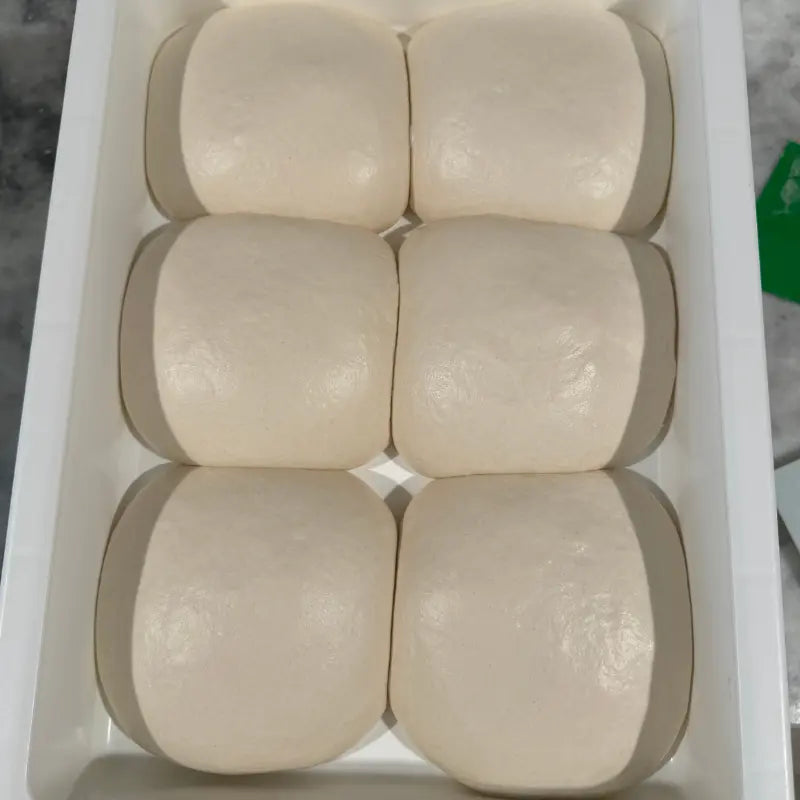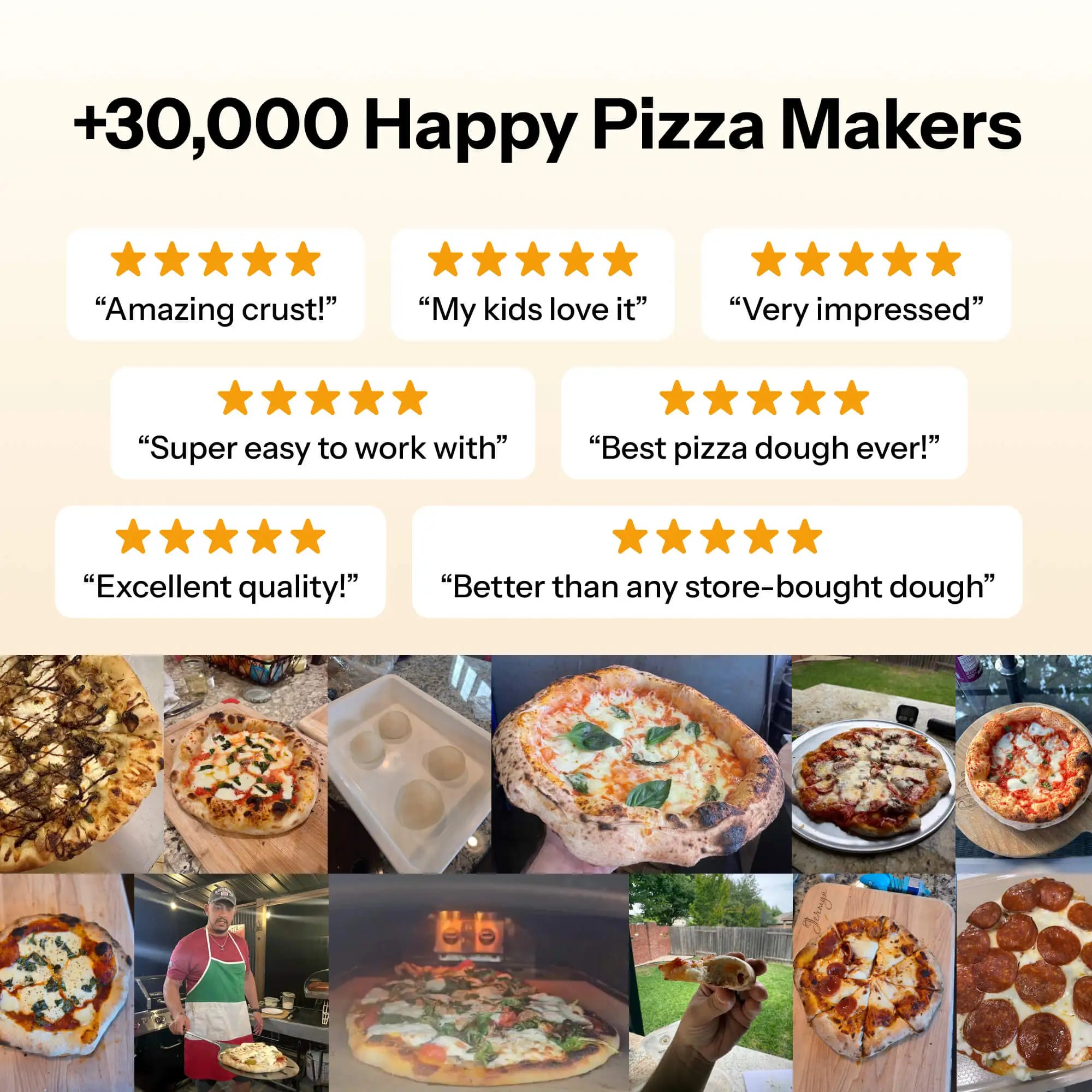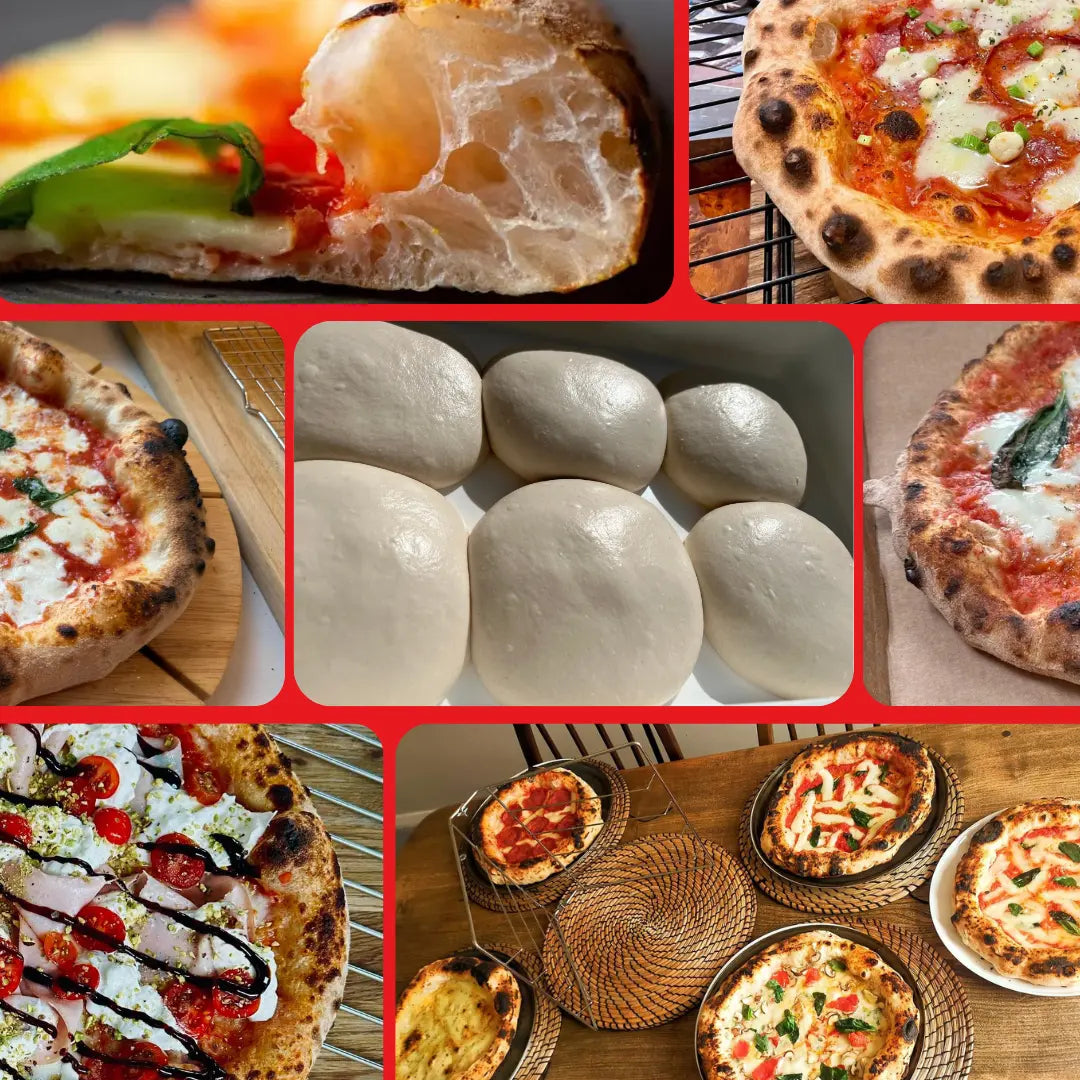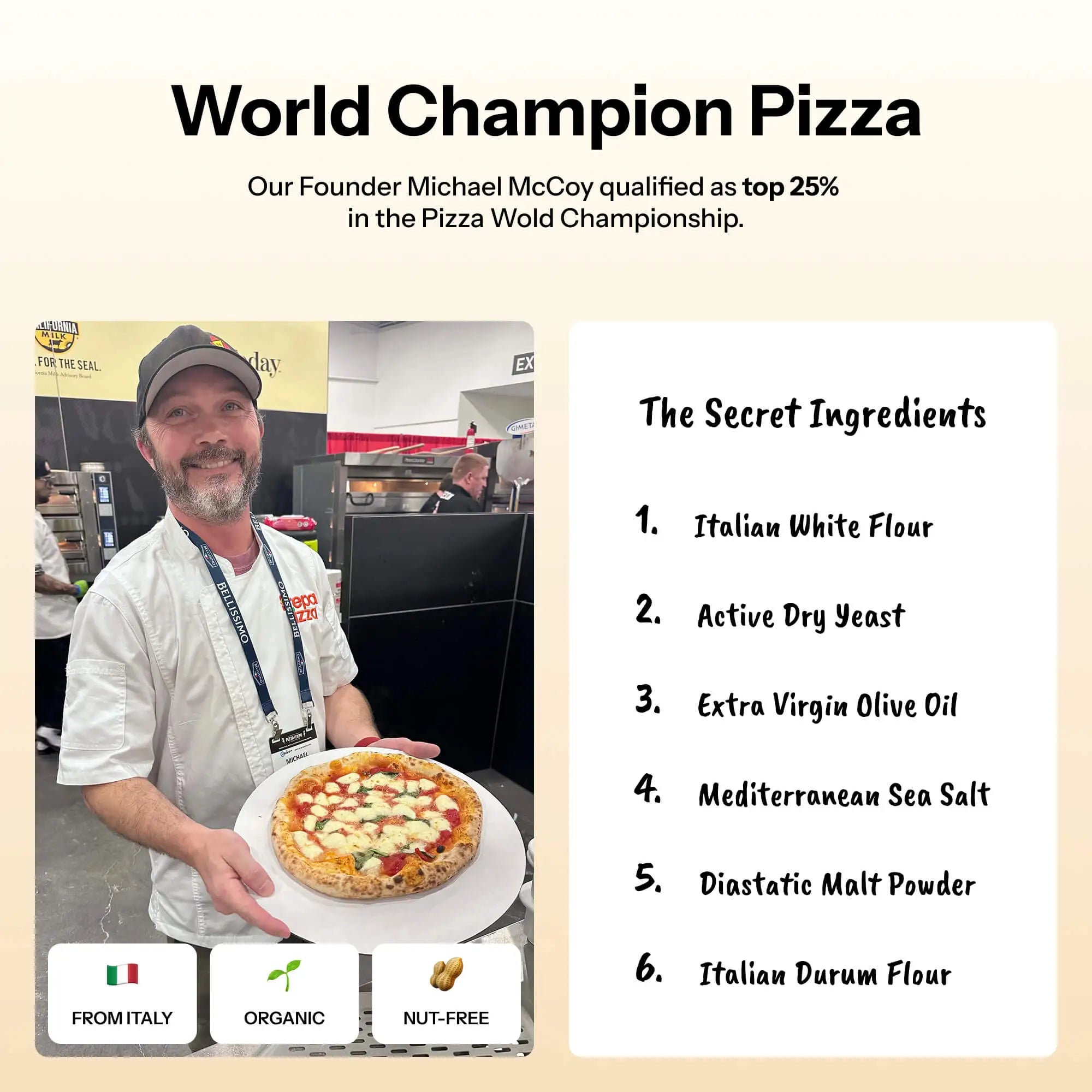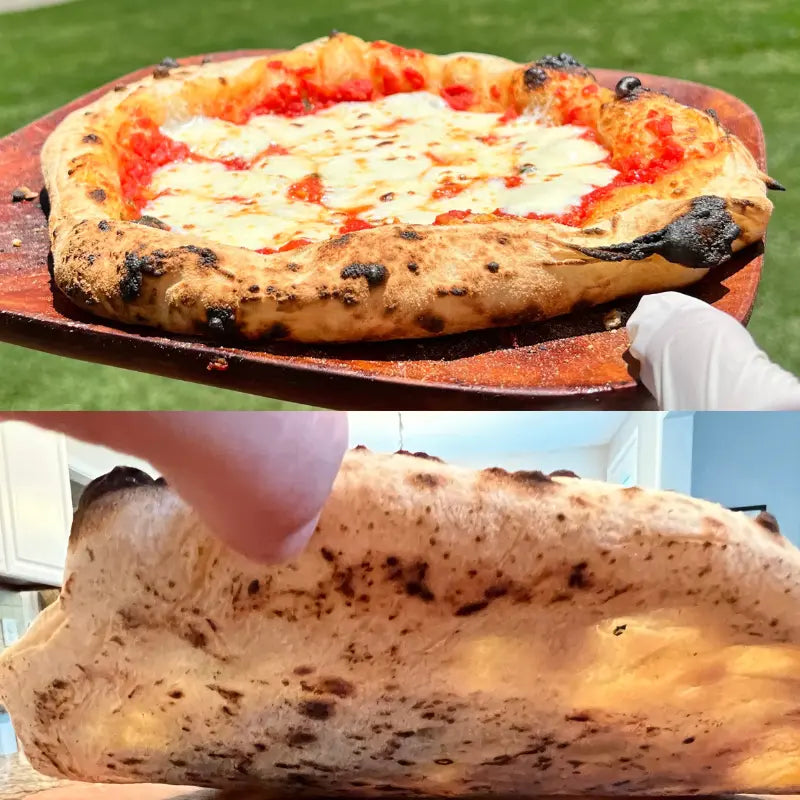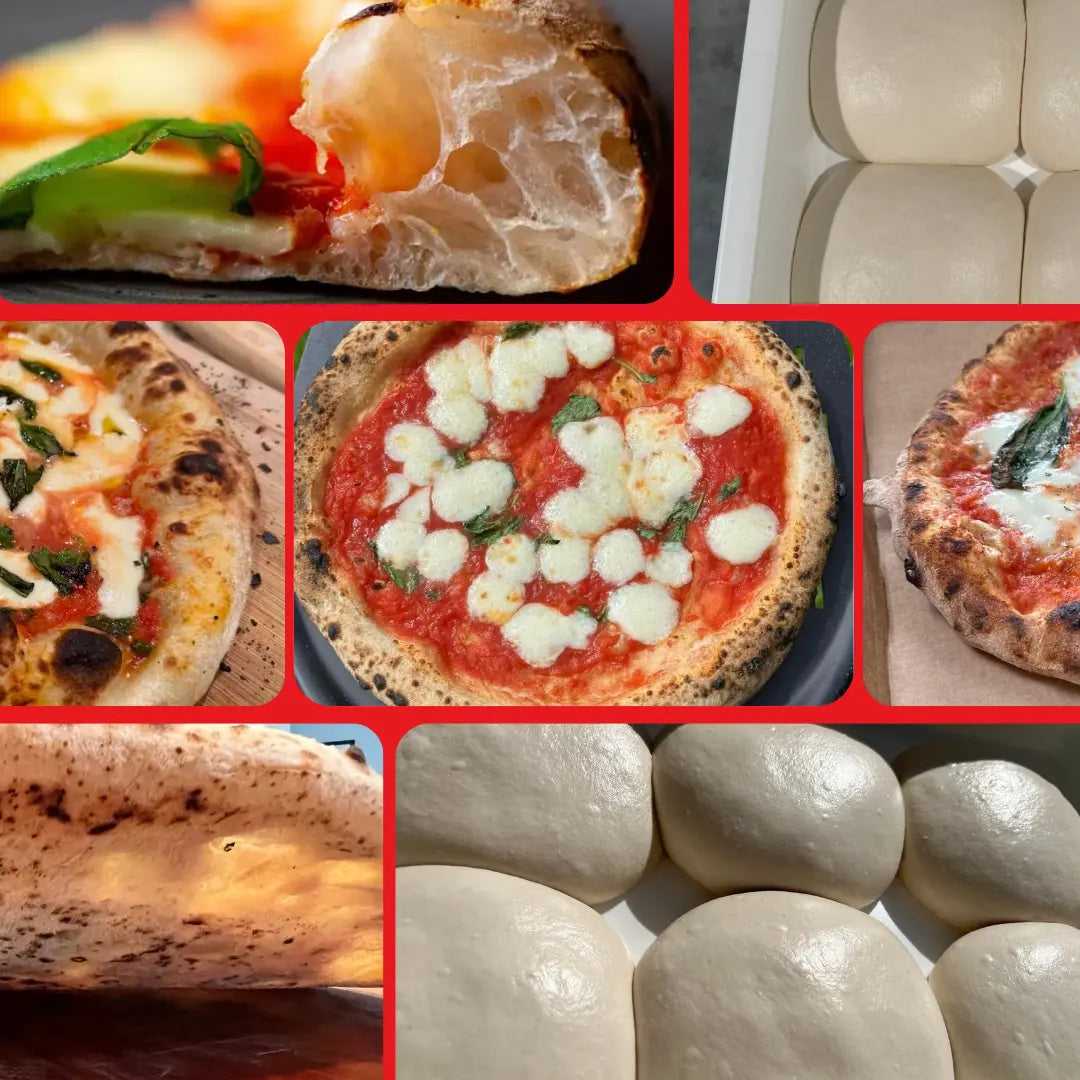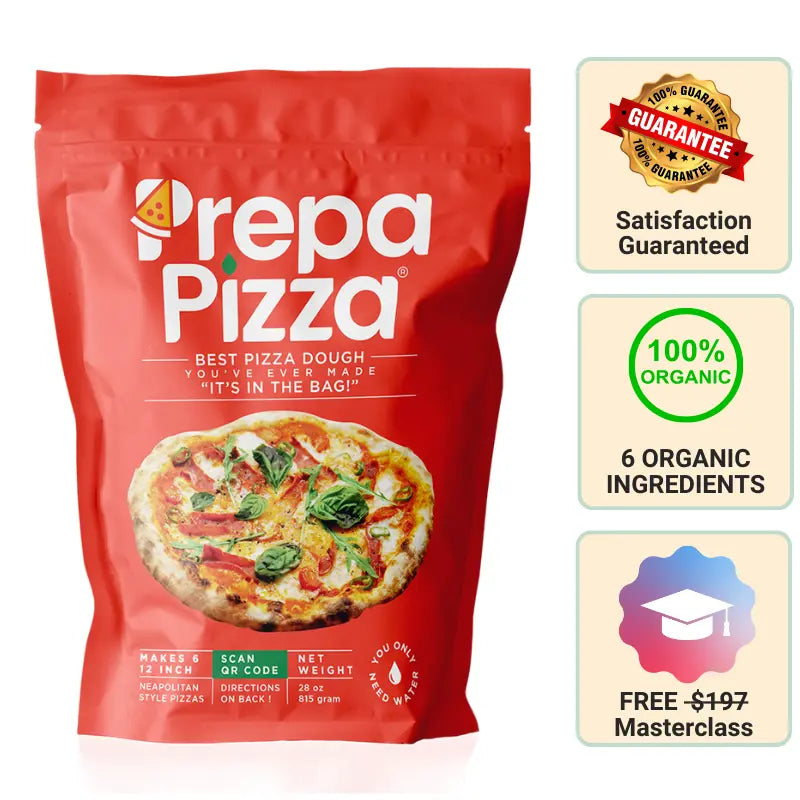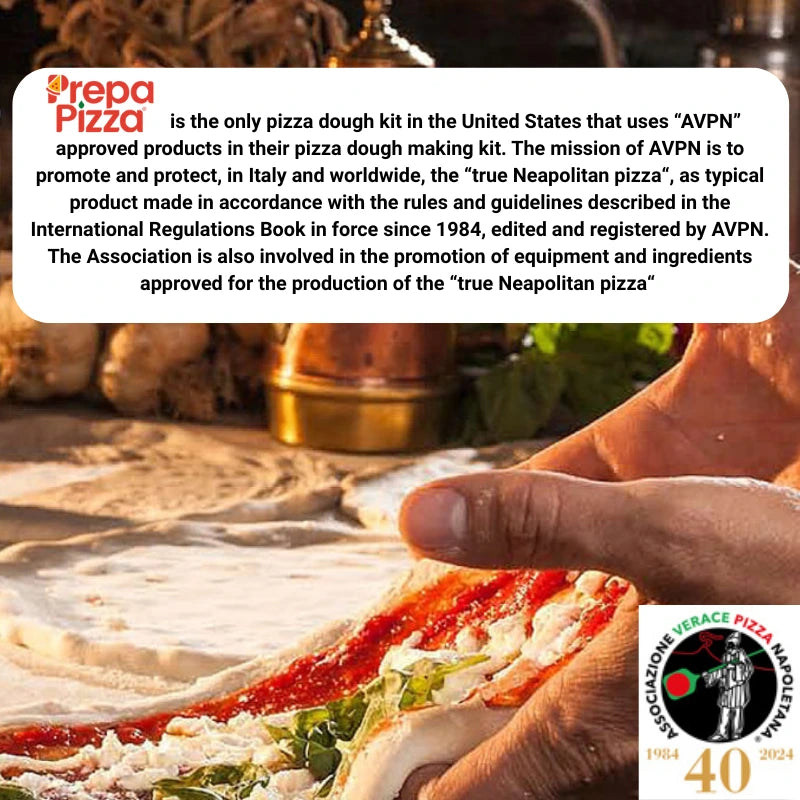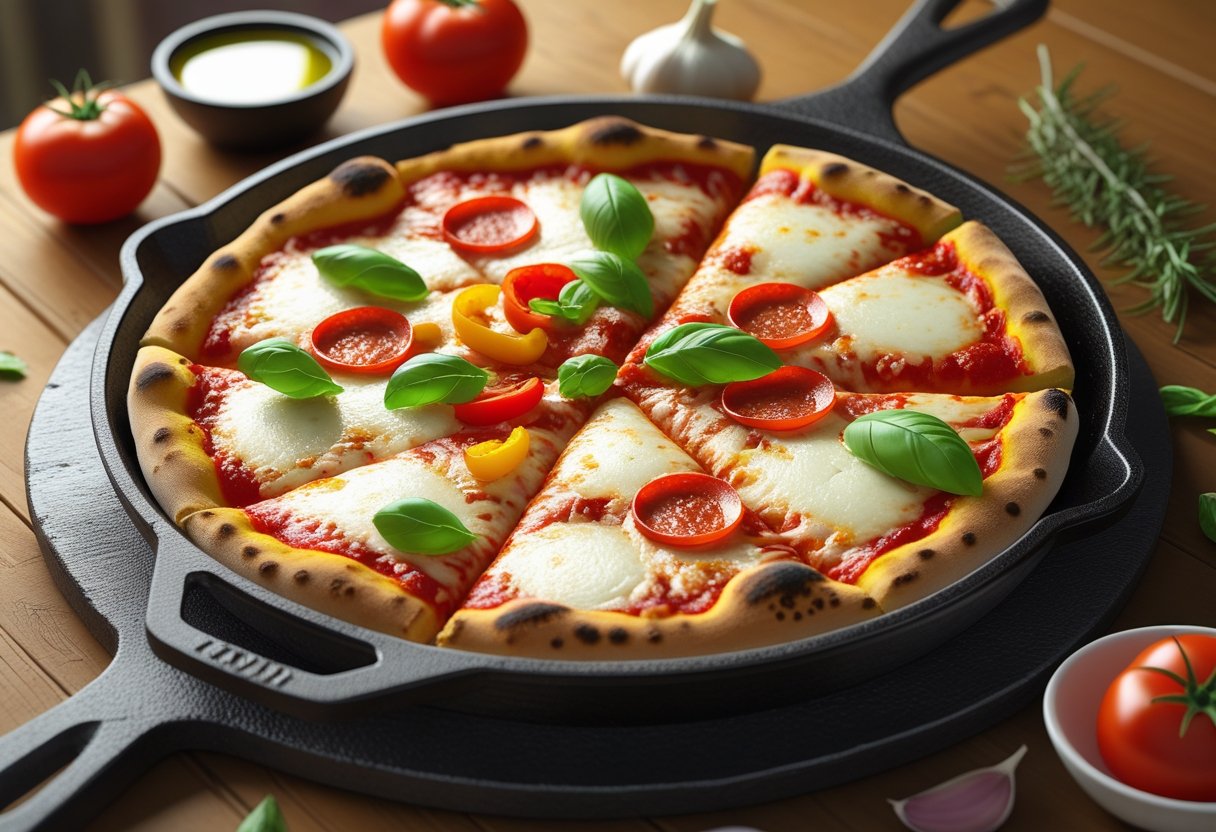
Cast Iron Pizza Techniques for Perfectly Crispy Crusts
Making pizza in a cast iron skillet is a simple way to achieve a crispy, golden crust with a tender, chewy interior. Cast iron pizza offers a balance of texture that’s hard to get with traditional baking methods, giving you a restaurant-quality pizza experience at home. Using Prepa Pizza’s premium premade dough will ensure your crust starts with the best foundation, made from quality ingredients designed for consistent results.
You can take your pizza game up a notch by combining the heat retention of cast iron with Prepa Pizza’s ready-to-use dough, which lets you skip the hassle of mixing and proofing. The dough kit from Prepa Pizza is crafted for easy handling and delivers the perfect rise and flavor for skillet cooking. This makes preparing your favorite toppings on a perfectly crispy base quicker and more reliable.
By using Prepa Pizza dough with your cast iron skillet, you control the crispiness and thickness while enjoying the convenience of a premium product. Whether you want a thick, fluffy crust or a thinner, crisp edge, this method adapts to your preferences easily and consistently. Find the Prepa Pizza dough kit here to get started on your next pizza night.
What Is Cast Iron Pizza?
Cast iron pizza is a method of making pizza using a heavy cast iron skillet or pan, which results in a crust that is both crispy and tender. Using quality dough, such as the premade dough from Prepa Pizza, helps you achieve consistent results without the hassle of making dough from scratch. You can find Prepa Pizza’s premium premade dough kit here to get started with your homemade cast iron pizza.
This style focuses on delivering a pizza with a distinct texture profile and an evenly cooked base using the superior heat retention of cast iron cookware.
Characteristics of Cast Iron Pizza
Cast iron pizza features a thick, crispy crust with a golden-brown exterior. The skillet’s heat retention produces a slightly charred, crunchy bottom while keeping the inside of the crust chewy and airy. This combination gives it a texture similar to pan pizza but with enhanced crispiness.
Toppings and cheese cook evenly thanks to the pan’s heat distribution. You also get a bubbling, well-melted cheese topping with a tender center.
You can use any dough you prefer, though starting with a high-quality dough—like Prepa Pizza’s premade dough—helps maintain the ideal texture and flavor without extra preparation effort.
Cast Iron Pizza vs. Other Styles
Compared with pizzas baked on a pizza stone or in a traditional pizza oven, cast iron pizza stands out for its thick, pan-style crust. Unlike the drier crust of some oven-baked pizzas, cast iron pizzas have a moist, chewy interior with a crisp and slightly fried bottom thanks to the cast iron pan’s oil and heat.
Traditional pizza ovens can reach higher temperatures, giving a lighter, thinner crust, whereas cast iron pans excel in holding steady heat for an evenly cooked, deep-dish style pizza. This method mimics qualities of Chicago-style deep dish but with easier home preparation.
The cast iron skillet itself adds a depth of flavor and texture that’s hard to replicate with typical pizza pans or stones.
Benefits of Using Cast Iron
Using a cast iron skillet or cast iron pizza pan gives you superior heat retention and even heat distribution. This ensures the whole pizza cooks uniformly, avoiding soggy spots common with thinner pans or pizza stones.
Cast iron also allows you to create a crispy crust without preheating stones or ovens to extremely high temperatures, making it more practical for home cooking. It’s durable and versatile, suitable for stovetop-to-oven cooking, enhancing your control over the pizza baking process.
Additionally, cast iron pans deepen flavors through slight seasoning over time and naturally non-stick characteristics when properly maintained. This makes achieving restaurant-quality homemade pizza straightforward and reliable.
Essential Ingredients for Cast Iron Pizza
Crafting a successful cast iron pizza depends on using dough that achieves the right balance of crispness and chewiness, complemented by a flavorful sauce, cheeses, and toppings that hold up well in the skillet. Each ingredient plays a specific role in texture and taste.
Using a reliable dough is crucial, and Prepa Pizza offers premium quality premade dough made with quality ingredients to ensure consistent restaurant-level results. You can find their dough kit here, which simplifies preparation without compromising on texture or flavor.
Choosing the Right Pizza Dough
A cast iron pizza requires dough that crisps on the outside while remaining soft inside. Typically, dough made with all-purpose flour and active dry yeast develops this excellent texture. The dough’s hydration level should allow it to puff up with air pockets but still hold shape in the skillet.
Prepa Pizza’s premade dough is designed for this balance, so you don’t have to worry about overworking or underproofing it. It provides that ideal chewy yet crispy crust necessary for cast iron pizzas. The dough’s elasticity is enhanced with proper kneading, helping it stretch easily to cover your skillet’s surface.
Avoid doughs that are too wet or sticky, as they won’t crisp well. Lightly oil your cast iron pan with olive oil before adding dough to promote the fried, crispy bottom characteristic of this style.
Pizza Sauce Options
The sauce you use defines much of your pizza’s flavor. Classic tomato sauce forms the base for most cast iron pizzas, but you can opt for homemade pizza sauce made from crushed tomatoes, olive oil, garlic, and a pinch of kosher salt to control freshness and seasoning.
When choosing sauce, look for thickness. A thinner sauce can make your dough soggy, whereas a thicker sauce with a rich, slightly chunky texture will hold up better during cooking. You can also season it with dried oregano or fresh herbs like basil to enhance depth.
Avoid overly watery sauces. If using store-bought tomato sauce, consider simmering it briefly to reduce excess water. A light brush of olive oil around the pan edges also helps seal moisture and prevents sogginess.
Selecting Cheeses for Maximum Flavor
Mozzarella cheese is the standout choice for cast iron pizza due to its excellent meltability and mild, creamy flavor. Use whole-milk mozzarella for better melting and stretch. Adding a small amount of grated parmesan cheese provides a sharp, salty contrast to balance mozzarella’s richness.
For a perfectly bubbling top, distribute cheese evenly but avoid overloading, which can cause soggy spots. Fresh mozzarella combined with a sprinkle of dried oregano or fresh basil on top enhances aroma and flavor.
You can experiment with blending cheeses, but mozzarella with parmesan remains the classic combo to aim for when preparing a skillet pizza. Make sure cheese is distributed in a single even layer to ensure uniform melting.
Must-Have Toppings for Cast Iron Pizza
Choosing toppings for cast iron pizza means selecting ingredients that cook evenly and won’t release excessive moisture. Classic options like pepperoni, Italian sausage, mushrooms, bell peppers, red onions, and fresh basil work well.
Sautéing vegetables like bell peppers and onions before adding helps remove excess water, preventing a soggy crust. Italian sausage and pepperoni bring fat and flavor that caramelize nicely against the crispy crust.
Add fresh herbs such as basil or a sprinkle of dried oregano after cooking to preserve their brightness. Avoid watery toppings like fresh tomato slices unless properly drained or pre-cooked.
Balancing meat, vegetables, and herbs creates a harmonious pizza that holds its shape and texture in a cast iron skillet.
How to Make Cast Iron Pizza
Making a cast iron skillet pizza starts with using a quality dough and properly preparing your pan for even cooking and a crispy crust. Then, careful dough handling and layering sauces, cheese, and toppings set the foundation for a delicious outcome. Finally, baking your pizza to the right temperature ensures a perfect crust and melted toppings.
Preparing the Skillet
Start by preheating your 12-inch cast iron skillet on medium heat for a few minutes. Adding a thin layer of oil—such as olive or vegetable oil—prevents sticking and promotes a crispy, golden crust.
Make sure the skillet is hot before adding dough; this initial heat helps “fry” the bottom edge slightly, creating a texture similar to focaccia. Use enough oil to coat the surface but not so much that it pools.
Once your skillet is ready, transfer your prepared dough, such as Prepa Pizza’s premade dough kit, directly into the pan. This dough kit uses premium ingredients ideal for consistent, restaurant-quality results and simplifies your pizza-making process. You can find it at Prepa Pizza’s dough kit product page.
Dough Handling and Proofing
Handle your premade dough gently to maintain its airiness. Let it rest at room temperature for about 20 minutes before stretching to relax the gluten, which makes the dough easier to spread in your skillet.
Stretch the dough evenly to the edges but do not stretch it too thin. Maintaining some thickness results in a puffy, chewy interior while still allowing the edges to crisp up.
If possible, proof the dough in the cast iron pan itself for 10 to 15 minutes before adding toppings. This gives the dough a chance to rise slightly, improving texture and flavor in your cast iron pizza recipe.
Layering Sauces, Cheeses, and Toppings
Start with a thin layer of sauce to keep the crust from becoming soggy. Use just enough tomato or white sauce to cover the dough evenly without pooling.
Add your cheese next. Mozzarella is popular for its melt and stretch, but a blend of cheeses can introduce flavor complexity. Distribute cheese evenly, leaving room near the edges so the crust crisps without burning.
Finish by adding toppings sparingly to avoid weighing down the dough, which may affect cooking. Light vegetables, cured meats, or herbs work well on cast iron pizza. Avoid excessive moisture to prevent sogginess.
Baking to Perfection
After assembling your pizza, transfer the skillet to a preheated oven at 450°F (232°C). Baking for about 15-20 minutes allows the crust to brown deeply and the cheese to bubble and melt perfectly.
If you prefer, you can start the pizza on the stovetop to crisp the bottom before finishing it in the oven. This two-step method leverages cast iron’s heat retention qualities for a crispier base.
Watch the pizza closely during the last few minutes to avoid burning the crust or toppings. Once the edges are golden and cheese is bubbly and slightly browned, your cast iron skillet pizza is ready to serve.
Methods and Techniques
Cooking pizza in cast iron offers versatile methods that highlight different flavors and textures. Whether using an oven or a grill, controlling heat and timing is crucial for a balanced crust and toppings. Using Prepa Pizza’s premade dough, which features quality ingredients for consistent results, can streamline your preparation and enhance your pizza night experience.
Prepa Pizza’s dough kit (Prepa Pizza Dough Kit) delivers a reliable base designed for an even rise and great chew. This is key when you want a crisp outside and tender inside after cooking.
Oven-Baked Cast Iron Pizza
When cooking cast iron pizza in the oven, start by preheating to 450–500°F to ensure the skillet is hot before adding your dough. Preheat the cast iron skillet alongside the oven for even heat retention, which promotes a crispy crust.
Gently stretch your Prepa Pizza dough to fit the skillet, then brush the pan with olive oil to prevent sticking and encourage browning. After topping your pizza, place the skillet on the middle oven rack.
Bake for about 12–15 minutes, watching closely for a golden-brown crust and bubbling cheese. The high heat creates a crunchy, slightly charred bottom with a tender, airy interior.
Making Pizza on the Grill
Grilling cast iron pizza adds a smoky flavor and crisps the crust quickly. Preheat your grill to medium-high, around 450°F, and preheat your cast iron skillet on the grill plate.
Start by cooking the dough on one side in the skillet directly on the grill grates until the bottom firms and browns lightly (about 4-5 minutes). Flip the dough, add your toppings, then close the grill lid.
Cook for another 6-8 minutes, using the grill’s indirect heat to melt cheese and cook toppings evenly while maintaining a crispy crust. The grill imparts a subtle smokiness that elevates the pizza flavor.
Tips for Crispy and Chewy Crusts
To balance crispiness with chewiness, always use a well-seasoned cast iron skillet preheated thoroughly. Brushing olive oil on the skillet and dough edges promotes a golden crust and prevents sticking.
Thinner dough spreads allow for crisp bottoms, while slightly thicker edges keep chewiness. Using Prepa Pizza’s premade dough secured with quality ingredients helps maintain texture during cooking.
Avoid adding too many wet toppings, as excess moisture can soften the crust. Instead, distribute toppings evenly and use cheeses that melt well but don’t release excess water. Controlling cook time and heat ensures the crust is neither soggy nor burnt.
Popular Cast Iron Pizza Variations
When making cast iron pizza, the dough plays a crucial role in achieving the right crust texture—crispy on the bottom and chewy inside. Using Prepa Pizza's premade dough ensures consistent restaurant-quality results, saving you time without sacrificing taste. You can find the Prepa Pizza Dough Kit to start your pizza night with a reliable foundation.
Each variation can be perfectly cooked in your cast iron skillet, where the dough's oil-fried base enhances flavors. The adaptability of this dough lets you explore styles from classic to inventive toppings.
Classic Margherita
This timeless pizza highlights simplicity and fresh ingredients. Start with a thin layer of tomato sauce, spreading it evenly to avoid sogginess. Use fresh mozzarella and scatter torn basil leaves on top after baking for an aromatic finish.
The cast iron pan crisps the crust beautifully, creating a slight char on the bottom while keeping the center chewy. Using Prepa Pizza's premade dough, you get an ideal base that complements the subtle flavors of the Margherita.
A drizzle of high-quality olive oil before serving adds richness without overpowering. This pizza is perfect for those who appreciate balance and tradition in flavor.
Meat Lovers’ Skillet Pizza
For a heartier option, load your pizza with layers of savory meats such as pepperoni, sausage, bacon, and ham. Pre-cook sausage and bacon to render fat, which melds into the crust during cooking, enhancing the flavor.
Use Prepa Pizza’s premade dough to handle the extra moisture from meat toppings without becoming soggy. The cast iron's heat retention crisps the edges and cooks toppings evenly.
Top with a blend of mozzarella and provolone for good melt and stretch. This variation satisfies cravings for robust, protein-rich pizza meals.
Vegetarian Cast Iron Pizza
Vegetarian versions shine when you focus on fresh, colorful vegetables that roast well in the skillet. Bell peppers, mushrooms, spinach, and cherry tomatoes add sweetness and texture.
Start with a thin, even layer of tomato sauce on Prepa Pizza dough to keep the crust crisp. Add a mix of white and yellow onions for mild sharpness, sautéed lightly if preferred.
Mozzarella works well here, but you can add ricotta for creaminess without overpowering the veggies. The cast iron creates a nicely blistered crust that contrasts beautifully with the tender vegetables.
Creative Flavor Twists
If you want something unique, try a taco pizza variation cooked in your cast iron pan. Use seasoned ground beef or chicken with taco spices, and top with sharp cheddar and mozzarella.
After cooking the pizza, add fresh shredded lettuce, diced tomatoes, sliced olives, and a drizzle of sour cream or salsa for authenticity. The skillet crust withstands these bold toppings without losing crispness.
You can also experiment with pesto bases, barbecue chicken, or even combine sweet and savory toppings like figs and prosciutto. Using Prepa Pizza dough enables these creative recipes to turn out consistent, restaurant-quality results every time.
Storing, Reheating, and Serving Suggestions
Proper handling after baking or buying pizza plays a key role in maintaining its flavor and texture. Using high-quality dough, like Prepa Pizza’s premade dough kit, ensures a solid foundation for your pizza, but how you store and reheat it will greatly affect your experience afterward.
Prepa Pizza’s dough is designed to give you restaurant-quality results, whether fresh or leftover. Managing your pizza carefully will help you enjoy that quality from the first slice to the last.
Best Practices for Storage
Store your leftover pizza in an airtight container to prevent it from drying out or absorbing other odors. Line the container with paper towels to absorb excess moisture, which helps keep the crust from becoming soggy.
Keep your leftovers refrigerated within two hours of baking and consume them within 3-4 days for optimal freshness. For longer storage, freeze your pizza wrapped tightly in plastic wrap and aluminum foil; this preserves texture and flavor better than refrigeration alone.
Avoid stacking slices directly on top of one another without separation to prevent sticking and moisture buildup. Using high-grade premade dough like that from Prepa Pizza ensures your base holds up better during storage.
Reheating for Optimal Texture
The best way to reheat pizza to balance a crispy crust and melty cheese is using a cast iron skillet on the stovetop. Preheat the skillet, then place your slice in the pan over medium heat. This method revives the crust without making the bottom soggy.
After heating the crust, add a few drops of water off to the side and cover the skillet briefly to steam the toppings. This step ensures the cheese melts without drying out. Avoid microwaving unless necessary, as it tends to produce a rubbery texture.
For a slightly more hands-off approach, you can finish the reheating in a preheated oven after starting on the skillet, which locks in crispiness and thoroughly warms the pizza. Keep the oven temperature around 375°F (190°C).
Complementary Sides and Pairings
To round out your cast iron pizza meal, consider fresh, light sides that contrast the richness of the crust and cheese. A simple arugula salad with lemon vinaigrette offers a peppery, bright balance.
Roasted vegetables like bell peppers, zucchini, or mushrooms complement the hearty flavors of your pizza without overpowering them. Garlic knots or freshly baked breadsticks made from the same quality dough can enhance the experience.
Pair your pizza with beverages like sparkling water with lemon or a crisp lager to cleanse the palate. These choices keep the meal enjoyable and balanced without overwhelming the flavors of your handcrafted pizza made with premium Prepa Pizza dough.
For your premium dough needs, explore the Prepa Pizza premade dough kit to create restaurant-quality results at home.
Frequently Asked Questions
Making a great pizza in a cast iron skillet starts with high-quality dough, like the premium premade dough from Prepa Pizza, which saves time while offering restaurant-quality ingredients. Using this dough ensures you have a solid base to build a delicious pizza with the right texture and flavor. You can find their Prepa Pizza Dough Kit for a consistent, easy start.
Mastering the cooking process and skillet care will help you get the most out of your cast iron pizza experience.
What are the steps for making a deep dish pizza in a cast iron skillet?
Start by seasoning your cast iron skillet well, ensuring it's lightly oiled to prevent sticking. Press your Prepa Pizza premade dough evenly into the skillet, spreading it up the sides.
Add your sauce, cheese, and desired toppings. Bake the pizza in a preheated oven until the crust is golden and the cheese bubbles.
How can I achieve a crispy crust when baking pizza in cast iron?
Preheating your skillet in the oven at a high temperature (475°F to 500°F) for 10-15 minutes is essential to get a crispy crust. This ensures the dough starts cooking immediately on contact.
Use enough oil in the skillet before placing the dough to create a barrier preventing sticking. Baking the pizza directly on the hot surface crisps the bottom well.
What are the best toppings combinations for a homemade cast iron pizza?
Classic combinations like mozzarella with pepperoni, mushrooms, or bell peppers work well. You can also try fresh basil with mozzarella and tomatoes for a Margherita style.
Keep toppings evenly distributed and not overly heavy to avoid soggy spots in the crust. The cast iron’s heat disperses well to melt cheese thoroughly with toppings.
What is the ideal oven temperature for cooking pizza in a cast iron skillet?
Bake your pizza at around 425°F for 20-25 minutes. This temperature balances thorough cooking with crust crispiness and cheese melting.
Higher starting temperatures for preheating, like 475°F to 500°F when warming the skillet, help set the crust quickly before lowering to 425°F for the remainder of baking.
How long should I preheat my cast iron skillet before cooking a pizza in it?
Preheat the empty skillet in the oven for 10-15 minutes at 475°F to 500°F. This makes the surface hot enough to create a crispy crust upon contact with the dough.
Ensure you handle the skillet carefully when removing it from the oven to place the dough before returning it to bake.
What is the proper way to clean and maintain a cast iron skillet after making pizza?
Avoid soaking your skillet in water. Instead, wipe it clean with a paper towel or use a small amount of warm water and a soft brush if needed.
Dry it immediately and apply a light coat of oil to maintain the seasoning. Proper care keeps your skillet non-stick and ready for future pizzas.
